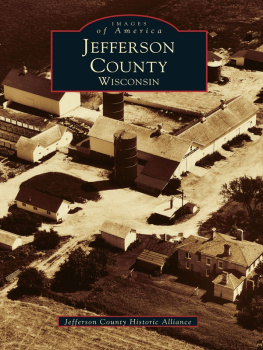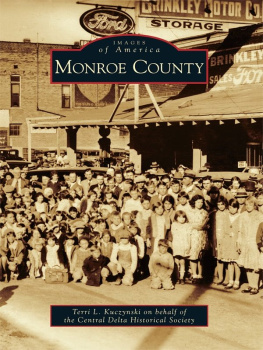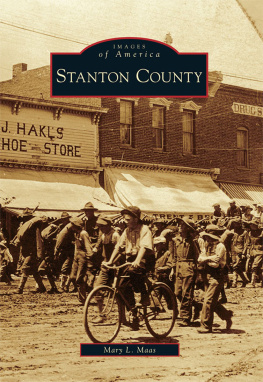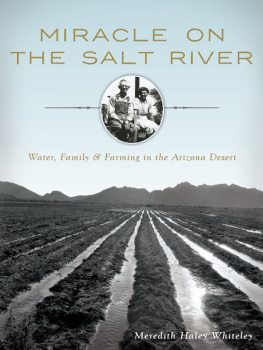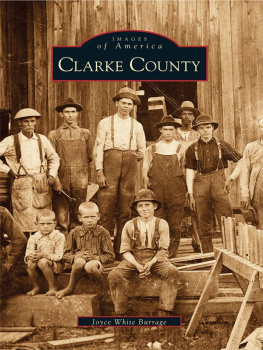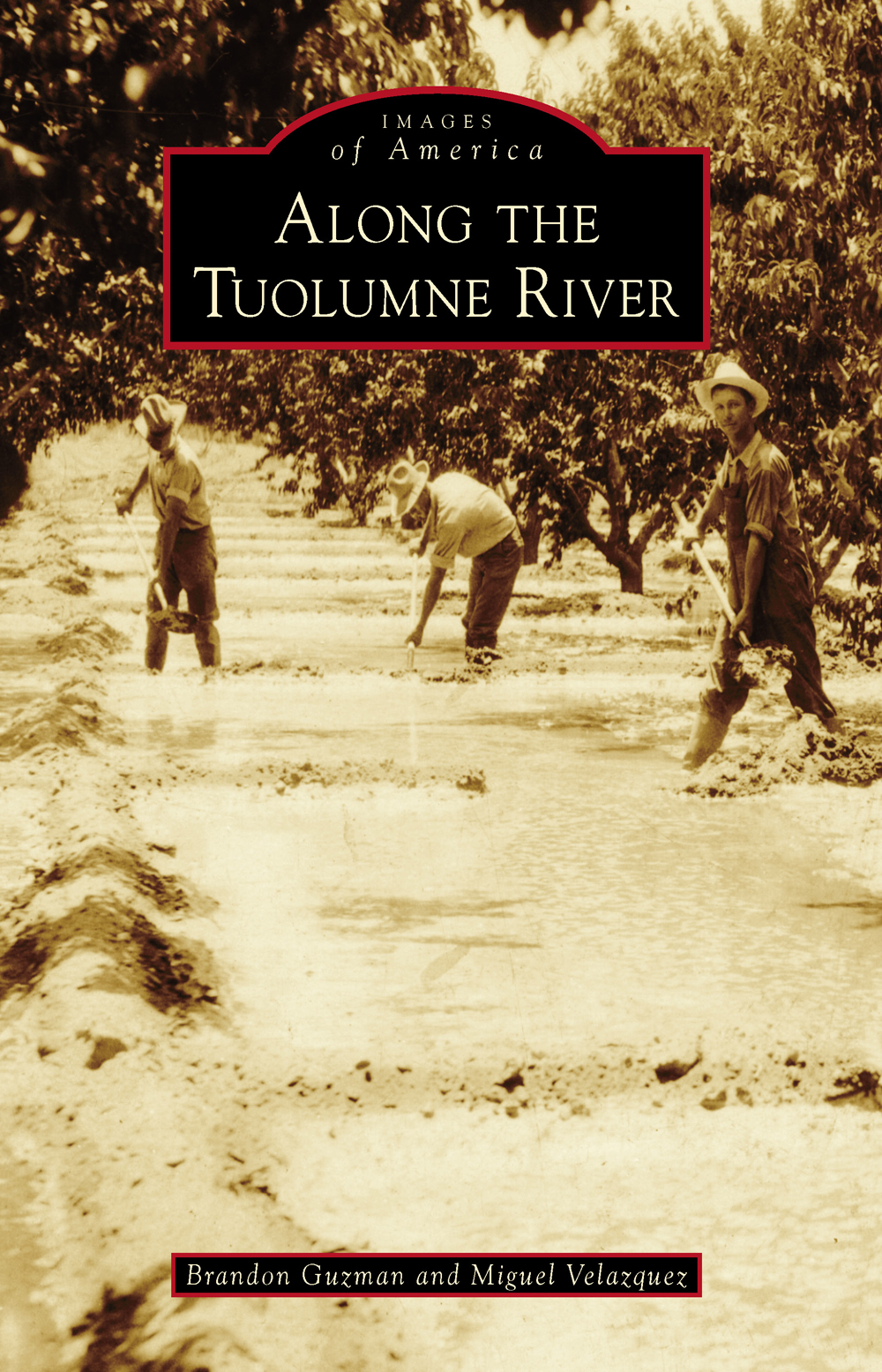
IMAGES
of America
ALONG THE
TUOLUMNE RIVER
ON THE COVER: The history of the Tuolumne River is the story of many unique towns and cities. The taming of the river allowed irrigation to develop throughout the region. In this c. 1940 image, men are irrigating an orchard near Turlock. Today, the land is irrigated using water from the Tuolumne River watershed, and it is important to recognize the rivers role in the areas history. (Courtesy of the McHenry Museum.)
IMAGES
of America
ALONG THE
TUOLUMNE RIVER
Brandon Guzman and Miguel Velazquez

Copyright 2015 by Brandon Guzman and Miguel Velazquez
ISBN 978-1-4671-3293-0
Ebook ISBN 9781439649381
Published by Arcadia Publishing
Charleston, South Carolina
Library of Congress Control Number: 2014947946
For all general information, please contact Arcadia Publishing:
Telephone 843-853-2070
Fax 843-853-0044
E-mail
For customer service and orders:
Toll-Free 1-888-313-2665
Visit us on the Internet at www.arcadiapublishing.com
To our parents, who gave us everything we needed to succeed (even though we did not go into the field of science)
CONTENTS
ACKNOWLEDGMENTS
This book could not have been completed without the support of the collections that offered images to us. The McHenry Museum and Historical Society; California State University Stanislaus Special Collections Library; Carlo M. De Ferrari Archive of the Tuolumne County Library; Alexander Trujillo; Robin Yanez, of Sacred Heart Parish in Turlock, California; the Souza family; Hughson Museum and Historical Society; Great Valley Museum of Natural History; Waterford Museum and Historical Society; and the La Grange Museum gift shop provided photographs and research directions for our project.
It is important to recognize and give appreciation to Laura Mesa, Kenneth Potts, and Charles Dyer for their research support and archival work. To our acquisitions editor, Ginny Rasmussen: you provided advice and ideas that were necessary for finishing the projectthank you. It is also important to recognize Katie Reid for her work in helping us promote the book.
The authors would like to also thank Maurice Hippmann for technical support and Eric Nystrom for taking his time to assist with editing the project. Finally, it is important to acknowledge the hardworking individuals who made Stanislaus County what it is today. To the dreamers, risk-takers, and mothers: you made it all possible.
INTRODUCTION
Go West, young man, go West and grow up with the country.
Horace Greeley (attributed)
The Tuolumne River provides life to an entire region in the Central Valley of California, playing a role in Stanislaus County mainly through irrigation. Along the Tuolumne River was researched and composed to put an emphasis on the rivers importance in the areas economy and how it has been the central variable in historical commercial development. The , Natural History of the River, offers a look at where river was and is today. The chapter will also discuss the importance of the rivers natural ecosystem.
The , The Hetch Hetchy Project, looks at the OShaughnessy Dam, which was built in the upper Tuolumne River. The damming of the Tuolumne River at this strategic location in the Hetch Hetchy Valley drew controversy not only at the state and local levels, but also at a national level. Hetch Hetchy is located in Yosemite National Park, and John Muir was one of the greatest opponents of the dam. However, his ideological battle was lost due to the necessity of water in San Francisco.
The , Development of Irrigation, chronicles the many dam projects built along the river. Irrigation has been practiced by many civilizations throughout history, and Stanislaus County is no exception. The region was fortunate that the Tuolumne River flows through its territory. The right to privatize the water of the river was passed with the Wright Law in 1887. The Turlock Irrigation District and the Modesto Irrigation District have worked together to build the irrigation projects that now exist in the county. The dams provided not only water but also electricity to a plethora of families throughout the years.
California is known worldwide for its agricultural products. Stanislaus County is located in the heartland of California and is one of the states most important producers. , Agriculture along the River, is a shortened visual history of Stanislaus County agriculture. The soil of Stanislaus County has been used for agricultural pursuits for more than 100 years. Cattle ranchers had success thanks to the thousands of acres of grasslands for the cattle to graze. Wheat farming was profitable to the first men who immigrated to the county, but drought years concerned the farmers. Then, irrigation gave them the security for their crops, and area farmers introduced many fruit trees and vegetables to the county. Watermelons were a big hit for farmers around the Turlock area. Alfalfa was the leading crop in the first irrigated farms. This helped secure the growth of the dairy industry, which is still found throughout the county. The most profitable crop in the county has been almonds. To protect the growing industries, residents created Granges and co-ops to promote local industries.
The , Town Development, focuses on how Modesto and Turlock expanded because of the changing agriculture throughout the countys history. This chapter features most of the settlements, towns, and cities that benefitted from the Tuolumne River. The earliest settlements were established near the river, but as irrigation developed, towns began moving farther away. Locals still depended on the river, but thanks to canals, it became less important to live so close. As Stanislaus County grew, Modesto and Turlock became important hubs for business. The labor immigration that came during the harvest season helped the towns grow. A few groups that immigrated to the area included the Japanese, English, Mexicans, Chinese, Swedish, Germans, Assyrians, Portuguese, and so many more. They built churches, schools, and businesses that added to the development of the county.
The Tuolumne River has brought wealth to Stanislaus County, and it also offers outdoor enjoyment for everyone. The , Recreation on the River, is devoted to those who take advantage of the natural attributes of the river. Many fun and educational activities can be practiced along and in the Tuolumne River, including fishing, swimming, and boating.
The Tuolumne River has played an influential role in developing the region. The river is a source of life for the environment and for the many towns and cities that surround it. Our forms of agriculture would not be possible without the taming of the river. Some residents of the United States put an emphasis on protecting business interests around the world but hardly take the time to understand what is around them right here at home. Local resources are the most important resources; the river is our history, and we must protect it.
One
NATURAL HISTORY OF
THE RIVER

The Tuolumne River is located in the central-eastern part of California. The river flows for 150 miles, from the Sierra Nevada Mountains to the San Joaquin River, and through three countiesMariposa County, Tuolumne County, and, finally, Stanislaus County. The river does have set boundaries today, but prior to water management, it would flood every year into the lowlands of Stanislaus County. (Courtesy of CSU Stanislaus Special Collections.)
Next page

